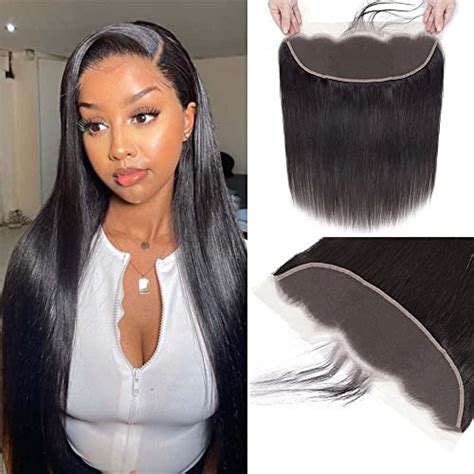Lace frontals and lace closures are essential tools for creating natural-looking, undetectable hair extensions. These versatile pieces can enhance the length, volume, and style of your hair, giving you the confidence to experiment with new looks.

Lace Frontal vs. Lace Closure: What’s the Difference?
Lace Frontal:
– Wraps around the entire perimeter of your head, covering the hairline and temples
– Creates a seamless, realistic illusion of your natural hair growing from the scalp
– Offers maximum customization options for parting and styling
Lace Closure:
– A smaller piece that covers only the center or top of the head
– Provides a natural-looking part, but does not extend to the hairline
– Less versatile than a lace frontal, but more cost-effective
Types of Lace
HD Lace:
– The most invisible lace type
– Blends seamlessly with the scalp
– More expensive than other lace types
Swiss Lace:
– Durable and easy to work with
– Has a medium transparency
– A popular choice for those with darker skin tones
French Lace:
– Delicate and breathable
– Provides a sheer, natural look
– May require bleaching to match the scalp
Choosing the Right Lace
When selecting a lace frontal or closure, consider the following factors:
- Skin tone: HD lace is recommended for darker skin tones, while Swiss and French lace work well for lighter skin tones.
- Hair texture: HD lace is suitable for all hair textures, while Swiss and French lace may be better for coarse or curly hair.
- Budget: HD lace is more expensive than other lace types.
- Durability: Swiss lace is the most durable, while French lace is more delicate.
Installing a Lace Frontal or Closure
Materials:
– Lace frontal or closure
– Adhesive or glue
– Scissors
– Tweezers
Step-by-Step Guide:
- Prepare the hair: Wash, condition, and blow dry your hair.
- Apply adhesive: Apply a thin layer of adhesive to the perimeter of the hairpiece.
- Position the hairpiece: Place the hairpiece on your head and press it down firmly.
- Trim the excess lace: Trim any excess lace around the edges.
- Style the hair: Style the hairpiece as desired, blending it with your own hair.
Effective Strategies for Blending Lace
- Bleach the knots: Use a bleach mix to lighten the knots where the hair strands meet the lace.
- Conceal the lace: Use foundation or powder to match the lace to your scalp color.
- Use hairspray: Apply a strong-hold hairspray to keep the lace in place and prevent it from lifting.
- Trim the baby hairs: Use a razor to trim any baby hairs around the hairline for a more natural look.
Tips and Tricks
- Use a wig cap: Protect your natural hair and prevent adhesive residue.
- Start with a small hairpiece: If you’re a beginner, start with a lace closure before attempting a full lace frontal.
- Practice makes perfect: The more you practice, the better you’ll become at installing and styling lace hairpieces.
- Invest in high-quality products: Quality lace, adhesive, and hair extensions will ensure a flawless finish.
Alternative Uses for Lace Frontals and Closures
Beyond traditional hair extensions, lace closures can be used for innovative applications:
- Hair toppers: Add volume and coverage to thinning hair.
- Eyebrow extensions: Create realistic-looking eyebrows.
- Temporary tattoos: Design and apply intricate lace patterns on the skin.
Additional Tables
Table 1: Types of Lace
| Type | Transparency | Durability | Cost |
|---|---|---|---|
| HD Lace | Very high | Medium | High |
| Swiss Lace | Medium | High | Medium |
| French Lace | Sheer | Low | Low |
Table 2: Lace Frontal vs. Lace Closure
| Feature | Lace Frontal | Lace Closure |
|---|---|---|
| Coverage | Entire perimeter | Center/top of head |
| Customization | Maximum | Limited |
| Price | Higher | Lower |
Table 3: Benefits of Lace Frontals and Closures
| Benefit | |
|---|---|
| Natural-looking extensions | |
| Increased versatility | |
| Confidence booster | |
| Protective styles |
Table 4: Common Lace Problems and Solutions
| Problem | Solution |
|---|---|
| Lace lifting | Use stronger adhesive |
| Knots showing | Bleach the knots |
| Baby hairs | Trim the baby hairs |
| Irritation | Use a wig cap and hypoallergenic adhesives |
Conclusion
Lace frontals and lace closures are transformative tools that can empower you to create the hair you’ve always dreamed of. By understanding the different types of lace, choosing the right hairpiece, and following effective strategies, you can achieve a natural, seamless, and stylish look that will turn heads wherever you go.
